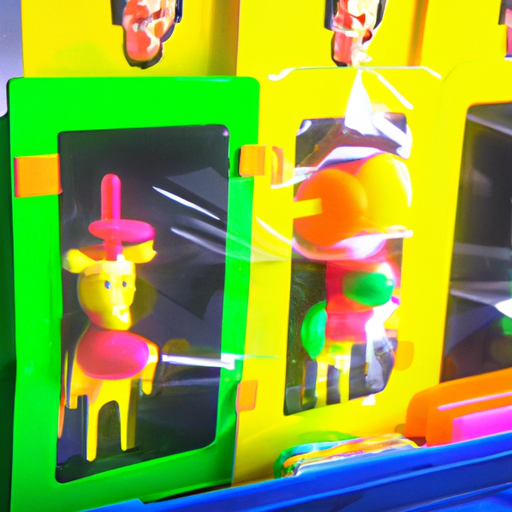
-
Table of Contents
Package Design for Children’s Toys: Playful and Engaging

When it comes to children’s toys, package design plays a crucial role in capturing the attention of young minds. A well-designed package not only serves as a protective covering for the toy but also acts as a marketing tool that can influence a child’s desire to play with it. In this article, we will explore the importance of playful and engaging package design for children’s toys, backed by research, case studies, and statistics.
The Power of Visual Appeal
Children are naturally drawn to visually appealing objects, and packaging is no exception. A study conducted by the University of Sussex found that children aged 4 to 5 were more likely to choose a toy with attractive packaging over a toy with plain packaging, even if the contents were the same. This highlights the importance of creating visually engaging package designs that capture a child’s attention and spark their curiosity.
One example of a toy company that excels in creating visually appealing packaging is LEGO. Their colorful and vibrant packaging features images of the toy’s contents, enticing children to imagine the endless possibilities of what they can build. LEGO’s package design not only showcases the product but also serves as a source of inspiration, encouraging children to engage in imaginative play.
Creating a Sense of Excitement
Children are naturally curious and easily excited. Package design can tap into this excitement by creating a sense of anticipation and surprise. One way to achieve this is through the use of interactive packaging. For instance, Hasbro’s Play-Doh packaging features a clear window that allows children to see the colorful dough inside. This not only creates excitement but also allows children to visualize the possibilities of what they can create with the product.
Another example is the packaging for Hatchimals, a popular interactive toy. The packaging is designed to resemble a large egg, building anticipation as children “hatch” the toy by breaking open the egg. This element of surprise and interactivity adds an extra layer of excitement to the toy, making it more appealing to children.
Storytelling through Packaging
Children are captivated by stories, and packaging can be a powerful storytelling tool. By incorporating characters, narratives, and illustrations on the packaging, toy companies can create a deeper connection with children. This storytelling aspect not only enhances the overall play experience but also helps children develop their imagination and storytelling skills.
One notable example of storytelling through packaging is the board game “Ticket to Ride” by Days of Wonder. The packaging features a colorful map of different train routes, enticing children to embark on an adventure. The illustrations and characters on the packaging set the stage for the game, immersing children in a world of exploration and strategic thinking.
Considerations for Age-Appropriate Design
When designing packaging for children’s toys, it is essential to consider age-appropriate design elements. Younger children, for example, are attracted to bright colors and simple shapes, while older children may prefer more intricate designs and details. Understanding the target age group and their developmental stage is crucial in creating packaging that resonates with children.
Additionally, it is important to consider the safety aspect of packaging design. Toys for young children often come with small parts that can pose a choking hazard. Packaging should be designed in a way that ensures the safety of children, such as using secure closures and clear warnings about small parts.
Environmental Considerations
While creating playful and engaging packaging is important, it is equally crucial to consider the environmental impact of packaging materials. According to the U.S. Environmental Protection Agency, packaging materials account for a significant portion of municipal solid waste. Toy companies can contribute to sustainability efforts by using eco-friendly materials and designing packaging that is easily recyclable.
One example of a toy company that prioritizes sustainability in packaging design is Green Toys. They use 100% recycled materials for their packaging and avoid the use of plastic ties or other non-recyclable materials. This not only reduces waste but also aligns with the values of environmentally conscious parents who are increasingly seeking sustainable toy options for their children.
Key Takeaways
- Visual appeal is crucial in capturing a child’s attention and sparking their curiosity.
- Interactive packaging creates a sense of excitement and anticipation.
- Storytelling through packaging enhances the play experience and fosters imagination.
- Age-appropriate design elements and safety considerations are essential.
- Toy companies should prioritize sustainability by using eco-friendly materials and recyclable packaging.
In conclusion, package design for children’s toys plays a vital role in attracting and engaging young minds. By creating visually appealing, interactive, and storytelling packaging, toy companies can capture a child’s imagination and enhance their play experience. Additionally, considering age-appropriate design elements, safety, and environmental sustainability are crucial factors that contribute to the overall success of package design for children’s toys. By understanding and implementing these principles, toy companies can create packaging that not only protects the product but also becomes an integral part of the play journey.
